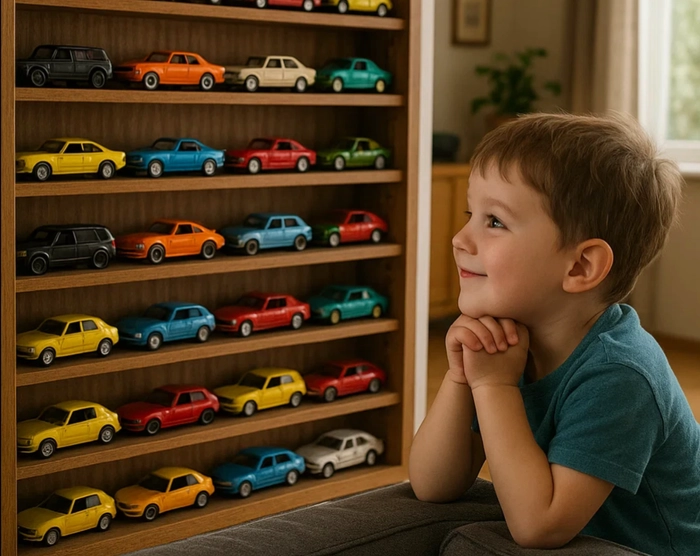A Collector’s Guide to Diecast Cars: Worth, Preservation, Market, and Investment Potential
Diecast cars, miniature replicas of real vehicles crafted from metal alloys, have captivated collectors since the early 20th century. From their humble beginnings as children’s toys to their status as highly sought-after collectibles, these models offer a unique blend of nostalgia, craftsmanship, and potential investment value. This comprehensive guide explores everything collectors need to know about diecast cars, including how to start a collection, their worth, preservation techniques, market trends, investment potential, rarity, and associated risks. Whether you’re a beginner or a seasoned enthusiast, this guide will help you navigate the exciting world of diecast car collecting.
Introduction to Diecast Cars
Diecast cars are scale models of automobiles, typically made from zinc or lead alloys through a process called die-casting, where molten metal is forced into a mold under high pressure. This technique, pioneered in the 1930s by companies like Dinky Toys and later popularized by Matchbox and Hot Wheels, produces durable, detailed replicas that capture the essence of real vehicles. Collectors are drawn to diecast cars for their ability to represent automotive history affordably, from classic 1950s muscle cars to modern Formula 1 racers.
The appeal of diecast cars lies in their craftsmanship, historical significance, and versatility. Available in various scales—such as 1:64 (about 3 inches long) to 1:18 (around 11 inches)—they cater to diverse interests, whether you’re passionate about vintage trucks, supercars, or movie-themed models like those from Pixar’s Cars. Collecting diecast cars is not just a hobby; it’s a way to connect with automotive culture and potentially build a valuable collection.
Starting Your Diecast Car Collection
Embarking on a diecast car collection is an exciting journey that begins with defining your focus. Here’s how to get started, along with key considerations for beginners.
Choosing Your Focus
Decide what type of diecast cars excite you most. You might focus on:
- Specific Brands: Ferrari, Porsche, or Ford.
- Eras: Classic cars from the 1960s or modern supercars.
- Themes: Movie cars, racing vehicles, or military models.
- Scales: Common scales include 1:64, 1:43, 1:24, and 1:18, each offering different levels of detail and size.
Popular Brands and Scales
Several brands dominate the diecast car market, each known for distinct qualities:
- Hot Wheels (Mattel): Affordable, widely available, and popular in 1:64 scale, ideal for beginners.
- Matchbox: Known for small, detailed models, often in 1:64 scale, with a focus on realism.
- Autoart: Produces high-end, detailed models, particularly in 1:18 scale, favored by serious collectors.
- Minichamps: Offers premium models with exceptional detail, often in 1:43 and 1:18 scales.
- Bburago: Specializes in 1:18 and 1:24 scale models, including limited editions like Ferrari replicas.
Scales determine the size and detail of the model:
- 1:64: Small (about 3 inches), affordable, and popular for Hot Wheels and Matchbox.
- 1:43: A global standard, popularized by Dinky Toys, measuring 4-6 inches.
- 1:24: Larger (about 8 inches), offering more detail and higher prices.
- 1:18: The largest common scale (about 11 inches), with intricate features like working doors and hoods.
Tips for Beginners
- Set a Budget: Prices range from a few dollars for mass-produced models to hundreds for limited editions. Decide how much you’re willing to invest.
- Research: Join online communities like The Diecast Zone to learn from other collectors and stay updated on new releases.
- Start Small: Begin with a few models that align with your interests, and expand as you gain experience.
- Avoid Common Mistakes: Don’t buy models solely for their potential value—collect what you love. Check the condition of both the car and its packaging, as these significantly impact worth. Avoid overpaying for common models by researching market prices first.
Understanding the Worth of Diecast Cars
The value of a diecast car can vary dramatically, from a few dollars to tens of thousands. Understanding the factors that influence worth is crucial for collectors.
Factors Affecting Value
Several key factors determine a diecast car’s value:
- Condition: Mint condition models, free of scratches, dents, or paint chips, are most valuable. Even minor damage can significantly reduce worth.
- Packaging: Original boxes or cards enhance value by indicating authenticity and protecting the model. Blemishes or missing packaging can lower value.
- Scale and Detail: Larger scales like 1:18 and 1:24 are often more valuable due to their intricate details, such as working doors or realistic interiors.
- Manufacturer: High-quality brands like Autoart, Minichamps, and Bburago produce models that tend to appreciate over time, while lower-quality brands may not.
- Availability: Limited edition models, prototypes, or those with production errors (variations) are highly sought after due to their rarity.
- Age and Historical Significance: Older models, especially from the 1930s to 1960s, can be extremely valuable if well-preserved. For example, a pre-war Dinky van with “Boyce Cycles” branding sold for £17,000 at auction in 2008 (Geek Effect).
How to Determine Value
- Price Guides: Resources like the Pixar Cars Diecast Price Guide offer updated values for specific models, while general guides like Collectors Guide to Diecast Toys and Scale Models by Dana Johnson provide broader insights.
- Online Marketplaces: Check eBay, Amazon, or Collectable Diecast for current selling prices to gauge market trends.
- Collector Communities: Forums and auction sites can reveal what collectors are willing to pay for specific models.
Common Mistakes to Avoid
- Ignoring Condition: Always inspect for damage before purchasing, as even small imperfections can lower value.
- Overpaying for Common Models: Research market prices to avoid paying inflated rates for widely available models.
- Neglecting Packaging: Models without original packaging are less desirable to serious collectors.
Preservation and Storage
Proper preservation and storage are essential to maintain the condition and value of your diecast car collection.
Best Preservation Practices
- Environmental Control: Store models in a cool, dry place to prevent corrosion or fading. Avoid direct sunlight, which can damage paint and materials.
- Protective Measures: Use plastic covers, acid-free tissue paper, or original packaging to shield models from dust and scratches.
- Handling: Handle models with clean, dry hands or gloves to avoid transferring oils that could damage the finish.
Storage Options
- Original Packaging: Keeping models in their original boxes or cards is ideal for long-term storage, especially for smaller 1:64 scale models.
- Dust Covers or Cases: Larger 1:18 scale models can be stored in dust covers or glass cabinets to protect them while allowing visibility.
- Temperature and Humidity: Maintain a stable environment to prevent damage from humidity or extreme temperatures.
Display Options
Displaying your collection can enhance its visual appeal while protecting it:
- Shelves and Cabinets: Glass cabinets like IKEA’s Detolf or Nornas are popular for their protection and visibility (Mike’s Diecast).
- Wall Mounts: Ideal for smaller collections, saving space while showcasing models.
- Custom Cases: Acrylic or wooden cases offer a personalized touch for serious collectors.
- Lighting: Use LED lights to highlight your display, but avoid UV lights to prevent fading.
- Enhancements: Add background artwork, decals, or scale-model dioramas to create a stunning showcase.
| Storage/Display Option | Pros | Cons |
|---|---|---|
| Original Packaging | Preserves value, protects from damage | Limits visibility, takes up space |
| Glass Cabinets (e.g., IKEA Detolf) | Protects from dust, visually appealing | Can be expensive, fragile |
| Acrylic Cases | Lightweight, UV protection | Less elegant, may scratch |
| Wall Mounts | Space-saving, unique display | Limited capacity, less protection |
| Custom Wooden Cases | Classic charm, durable | Heavy, costly to customize |
The Diecast Car Market
The diecast car market is thriving, driven by collector demand, technological advancements, and nostalgia.
Current Market Trends
- Market Size: Valued at $1.8 billion in 2023, the market is projected to grow to $3.0 billion by 2034, with a CAGR of 4.8% (Transparency Market Research).
- Nostalgia and Retro Culture: Demand for classic car replicas, especially from the 1950s and 1960s, fuels market growth.
- Advanced Manufacturing: Technologies like 3D printing enable more detailed and accurate models, attracting discerning collectors.
- Online Platforms: The rise of e-commerce and online forums has expanded access, with platforms like eBay and Diecast Models Wholesale offering a wide range of models.
- Limited Editions: Brands are releasing exclusive models tied to events or collaborations, increasing collector interest.
Popular Brands
- Mattel (Hot Wheels): Known for frequent releases, including tracksets and limited editions.
- Matchbox: Offers affordable, realistic models in 1:64 scale.
- Autoart: Produces high-end models with intricate details, often in 1:18 scale.
- Minichamps: Specializes in premium, detailed replicas.
- Bburago: Releases 1:18 and 1:24 scale models, including Ferrari collections and limited editions like the Bugatti Mistral W16.
Where to Buy and Sell
- Online Marketplaces: eBay, Amazon, and Collectable Diecast are go-to platforms for buying and selling.
- Specialized Retailers: Sites like Diecast Models Wholesale offer a variety of scales and brands.
- Collector Forums: The Diecast Zone has buy/sell sections and community discussions.
- Auctions: Specialized diecast auctions can yield rare finds, though prices may vary based on demand.
Investment Potential of Diecast Cars
Diecast cars can be a rewarding investment, but success depends on choosing the right models and understanding market dynamics.
Are Diecast Cars a Good Investment?
Certain diecast cars can appreciate significantly, especially those in mint condition, with original packaging, from high-quality manufacturers, and with limited production runs. For example, a Hot Wheels “Japan Historics” set from 2016, originally $40, now sells for over $600—a 1,400% increase (Hot Match Collectables). Vintage models, like a 1950s Dinky van, can fetch thousands at auction.
However, not all diecast cars are guaranteed to increase in value. The market can be unpredictable, and investing solely for profit may lead to disappointment. Collecting for passion while being mindful of investment potential is often the best approach.
What to Look for in Investment Pieces
- Mint Condition: Models with no damage or wear are most valuable.
- Original Packaging: Boxes or cards enhance authenticity and value.
- Limited Editions: Models with low production numbers, such as Bburago’s Bugatti Mistral W16, are highly sought after.
- Classic Vehicles: Older or discontinued models, especially from iconic eras, tend to appreciate.
- Reputable Manufacturers: Brands like Autoart, Minichamps, and Bburago produce models that hold value over time.
Risks Involved
- Market Volatility: Trends can shift, and popular models today may lose value in the future.
- Condition Risks: Damage, even minor scratches, can drastically reduce a model’s worth.
- Storage Costs: Proper storage (e.g., display cases) can be expensive, and there’s a risk of loss or damage.
- Liquidity: Selling rare models can be challenging, as the market is niche compared to stocks or real estate.
| Investment Factor | Impact on Value | Example |
|---|---|---|
| Mint Condition | High value if undamaged | Hot Wheels model with no scratches |
| Original Packaging | Increases authenticity | Matchbox car in original box |
| Limited Edition | High demand due to scarcity | Bburago Bugatti Mistral W16 |
| Classic Vehicle | Appreciates over time | 1950s Dinky van (£17,000 at auction) |
| Manufacturer Quality | Higher quality, higher value | Autoart 1:18 scale model |
Rarity and Collectibility
Rarity is a cornerstone of diecast car collecting, driving both value and desirability.
What Makes a Diecast Car Rare?
- Limited Editions: Models produced in small quantities, such as Bburago’s Ferrari replicas or Majorette’s Tune Ups Series 3, are highly coveted.
- Production Errors: Variations, like a Hot Wheels model with a unique paint job or casting mistake, can become collector’s grails.
- Prototypes: Pre-production models or test runs are extremely rare and valuable.
- Historical Significance: Models tied to iconic events, drivers, or films (e.g., Fast and Furious cars) gain value due to pop culture influence.
How Rarity Affects Value
Rare models often command premium prices due to supply and demand. For example, a limited-edition Ferrari 250 TR 58 by Tecnomodel, with only 50 pieces worldwide, retails for $279.99 (Diecast Models Wholesale). Staying informed about new releases and market trends through forums and price guides is essential for identifying rare models.
Staying Informed
- Collector Communities: Join forums like The Diecast Zone to learn about rare releases and trends.
- Price Guides: Use resources like the Pixar Cars Diecast Price Guide for specific models.
- Market Research: Monitor auction sites and online marketplaces to track which models are gaining value.
Conclusion
Diecast car collecting is a multifaceted hobby that combines passion, history, and the potential for financial gain. By understanding how to start a collection, assess value, preserve models, navigate the market, and evaluate investment potential, collectors can build a rewarding and potentially lucrative collection. While risks like market volatility and condition issues exist, the joy of collecting and the thrill of finding a rare model make this hobby uniquely fulfilling. Whether you’re drawn to the nostalgia of vintage Dinky Toys or the excitement of modern limited editions, the world of diecast cars offers endless opportunities for discovery.
Key Citations
- Common Mistakes to Avoid in Diecast Car Collecting - Darlington Diecast
- How to Display Diecast Cars: Guide for Collectors - Mike’s Diecast
- Die-cast Toys Market Size, Share, Trends & Industry Sales - 2034
- Are Diecast Cars a Good Investment? - Darlington Diecast
- Diecast Cars Collectors Guide - Geek Effect
- The Diecast Zone – Original Club for Collectors
- Pixar Cars Diecast Price Guide, Checklist, & Store
- Collectable Diecast - Best Selection of Diecast Model Cars
- Diecast model cars 1/18 1/24 1/12 1/43 1/64 1/32 for collectors
- Investing in Diecast Model Cars: A Hidden Gem in Collectibles



